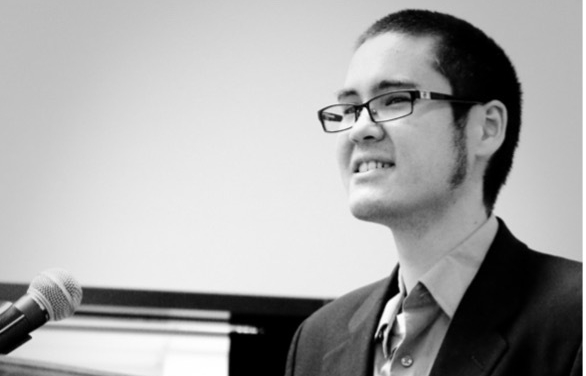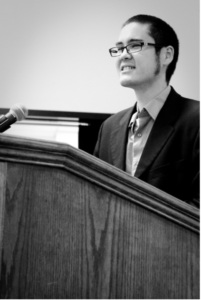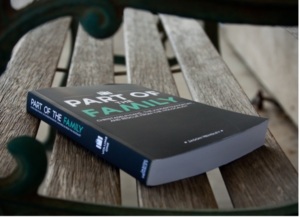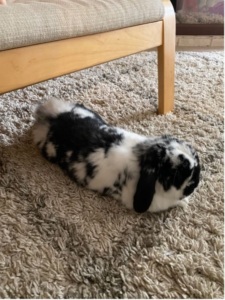
Ambassador Connections: Jason Hensley, Southern California
 1. As a NewsLitNation ambassador, you clearly are committed to news and media literacy education. What drives that commitment?
1. As a NewsLitNation ambassador, you clearly are committed to news and media literacy education. What drives that commitment?
Outside of the high school classroom, I work as an adjunct at a few local universities. One of those universities asked me to teach a course about the current civil rights movement. They wanted me to discuss the concept of “wokeness,” the development of the Black Lives Matter movement and the impact of George Floyd’s death.
In putting together the course material, I was amazed by the way that social media platforms were used to promote ideas that were completely false, and easily disprovable. When George Floyd was murdered, various memes and posts were spread about some of his past arrests, one of which included a photo of a woman. It was said that this woman was pregnant, and that Floyd had assaulted her. While it is true that Floyd was imprisoned for an assault, it was not an assault of a pregnant woman. Further, the picture that was used was a photo that had been taken of an American tourist who had been assaulted in Spain and had nothing at all to do with Floyd. For me, stumbling across this post and researching it further really brought out the need to do more work with news literacy.
Our decisions as a society are only as good as the information we have, and if we are consistently making decisions with incorrect information that we believe to be correct, we’re in trouble. Therefore, I believe it is imperative to share news literacy tools with others so that we can learn to discard this misinformation and actually hold on to the information that is true. Without that ability to discern, we can become jaded and simply choose not to listen to any information, which is not only a travesty, but dangerous.
2. Name a favorite tool or tip for teaching news literacy that you can share with our educator community, and your students’ reactions.
One of the best things that I’ve learned through being involved with NLP is how to do a reverse image search. I previously had no idea that something like this was possible, but it is so helpful because it often allows one to see that misleading images were posted before the incident that they supposedly depict (like the aforementioned photo that was said to be of the woman that Floyd had assaulted). I haven’t yet shared this tool with my students, but I plan to do so shortly.
The tool that I’ve most recently shared with my students that I’ve found really helpful has been Reuters Fact Check. When I shared it with the students, they were blown away by how many misleading posts are made each day. Rather than focusing on the specifics of each post on Reuters, looking at the number of posts per day really helped my students see the extent of the problem of misinformation and disinformation.
3. These are particularly challenging times for being an educator. What has been your go-to de-stressor?
I find a lot of strength in connecting with people. I think that we as humans were made to create connections, to relate to each other and to empathize with one another. Therefore, despite the fact that this time is challenging, I de-stress by reaching out to others, trying to connect with them and attempting to see how they are coping with everything. I’ve also been trying to give more classes related to things like news literacy, simply because I think that when society can get ahold of better information, society will improve. In this way, I feel as though I’m contributing to slowly helping society become healthier and happier.
4. How does your work as a news literacy ambassador contribute to your local community?
I already mentioned the course that I gave about the current civil rights movement. Without news literacy, that course would have had very little impact. News literacy undergirded it and made it meaningful. It allowed the students to see past some of the false narratives they had heard previously and start thinking more deeply about information and the way that it impacts their view of the world. Further, in using Checkology® and RumorGuardTM in my classroom, I have found that my students are really beginning to grasp the way that information can be manipulated and used to shape public opinion. They are developing the ability to sift through material and to figure out quality sources.
One of my major goals this year as a news literacy ambassador is to connect with the superintendents of the local districts and start holding regular professional development with the public schools in this area. In the next week or so, I intend to reach out to the local paper and introduce myself and my work as an ambassador, and then with that introduction, reach out to the superintendents.
 5. Aside from fighting for facts, what else are you passionate about?
5. Aside from fighting for facts, what else are you passionate about?
This is connected to my fight for facts but is also slightly different. I’m really passionate about people. People matter. Building on that, people working together matters. One of my major goals in life is to bring people together, to acknowledge that we are all part of a shared community, to appreciate each other, to learn from each other and to also struggle with each other. We all have different ideas. Even if we all get to the facts, it can still be difficult to bring together disparate personalities, religions and ideologies. But I think it’s crucial. Thus, I fight for facts, but I also fight for appreciation –– appreciation of differences and appreciation of each other, despite our differences.
As part of that love for people, I decided to get my Ph.D. in Holocaust and genocide studies. I wanted to better understand what develops hatred between groups (particularly religious groups) and why some choose to stand against genocide. In the process of studying the Holocaust, I stumbled across stories of rescue via the Kindertransport that had not yet been told; these eventually led to writing the award-winning book Part of the Family and producing a documentary of the same name.
 6. Are you on team dog, team cat, team wombat?
6. Are you on team dog, team cat, team wombat?
So, I don’t have a dog or a cat. If I had to choose one, I’d choose a dog, just because dogs are so happy; I love that about them. However, I’m actually part of team bunny. I always thought that having a bunny was silly, and when I met someone who had one as a pet, I didn’t believe it –– I couldn’t understand why someone would have something as a pet that couldn’t really do anything helpful (i.e., it can’t act as a guard dog and isn’t really a companion in the same way that a dog or a cat could be). But, after I had four daughters, I found bunnies becoming an important part of my life. Now, I absolutely love being part of team bunny. There’s nothing that quite makes a day better than petting something so fuzzy.
Jason was recently featured in a story in Acorn Newspapers in California: “Students learn to discern fake news.”
 1. As a NewsLitNation ambassador, you clearly are committed to news and media literacy education. What drives that commitment?
1. As a NewsLitNation ambassador, you clearly are committed to news and media literacy education. What drives that commitment?  5. Aside from fighting for facts, what else are you passionate about?
5. Aside from fighting for facts, what else are you passionate about? 6. Are you on team dog, team cat, team wombat?
6. Are you on team dog, team cat, team wombat?